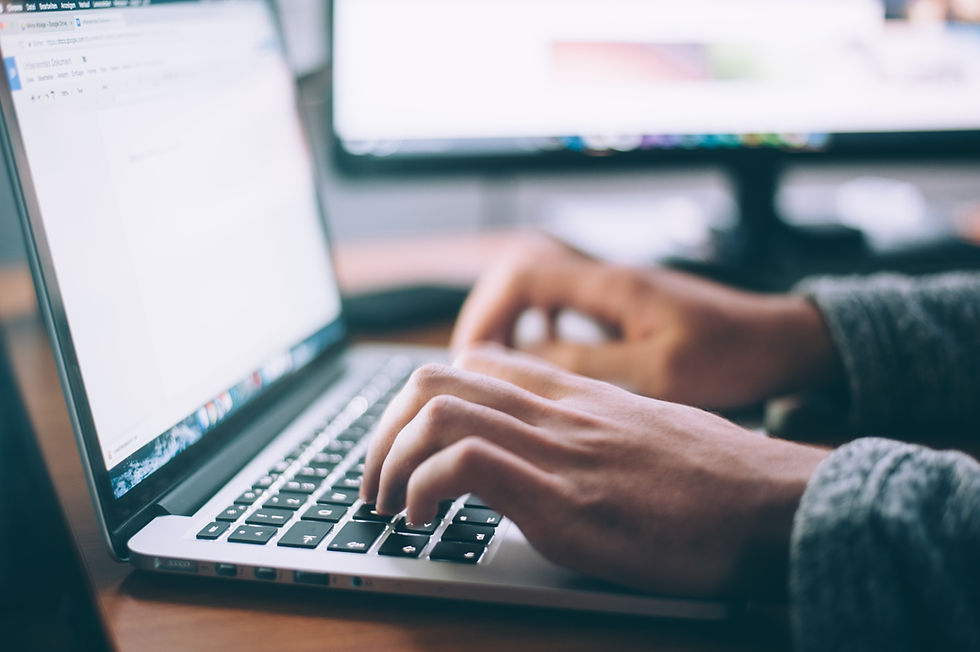Four benefits of Pilates for postnatal recovery
- Rachel Walsh

- Mar 2, 2023
- 4 min read
Pregnancy and childbirth can take a real toll on women's bodies. Here’s why Pilates can be a highly effective aid to post-natal recovery and rehabilitation, helping to correct imbalances in the body and improving posture, strength and endurance.
1. Rebuilds and strengthens pelvic floor muscles
The pelvic floor is a group of muscles that support the organs in the pelvis such as the bladder, bowel and uterus and works with other muscles to stabilise the spine. The pelvic floor can become weakened during pregnancy and childbirth.
Pelvic floor exercises help to rehabilitate and strengthen pelvic floor muscles, prevent stress incontinence, and improve your posture and core strength. They also help to increase blood flow, aid healing and reduce perineum soreness.
Try the NHS ‘squeezy’ app and aim to start exercises straight after birth if possible, to avoid muscles remaining stretched and further weakened by daily activity.
There is no limit to the number of exercises if muscles aren’t fatigued. Aim for three blocks daily (10 slow with a hold of up to 10 seconds) and 10 quicker repetitions.
How to do pelvic floor exercises:
1. Stand, lie or sit with your feet slightly apart.
2. Draw up and tighten the muscles around your back passage and hold.
3. Take the same feeling to the front as if you are stopping urine then lift up through the vagina. Imagine stopping wee and wind!
4. Hold for 6 and release, then repeat.
5. Slow contractions strengthen the slow-twitch muscle fibres to support the pelvic organs.
6. For fast contractions, tighten all the muscles at once (to strengthen the fast-twitch fibres).
Try not to tilt the pelvis, tense the buttocks, or hold your breath while performing the exercises. A helpful visualisation is to think of your pelvic floor muscles as an elevator.
2. Reduces abdominal separation (diastasis recti)
Diastasis recti is when the abdominal muscles separate to allow for the growing baby and can stay for up to a year after birth. If the gap is the width of two fingers or more, you should build up slowly and avoid any strong curl-up movements. Pelvic tilts and abdominal hollowing will slowly build strength in the deep core muscles, the transverse abdominals, which can help to close the gap.
How to check for yourself
1. Lie with feet and knees hip width apart.
2. Put your first two fingers just below the belly button (horizontally).
3. Inhale and draw the belly button towards the spine.
4. Exhale and lift the head and shoulders up.
5. Feel how many fingers can fit into the gap. Gently press in and out to feel the gap.
6. Keep breathing and relax down when you need to.
7. If the gap is wider than two fingers, speak to your GP or midwife.
3. Improves posture and lower back pain
Lordosis, or an excessive curve in the lower back, can occur when the uterus expands and causes the pelvis to tilt back to counterbalance the load (an anterior tilt). You may also find that with all the lifting and twisting in your daily routine your shoulders start to round forwards and, along with weakened abdominals, it is then more challenging to maintain a good posture.
Pilates exercises encourage a ‘neutral spine’, with shoulders stabilised and core muscles engaged. Postural alignment and stronger core muscles will in turn help to reduce back pain.
4. Improves wellbeing and mental health
Pilates can also increase energy and sleep quality, both of which are welcome when caring for a newborn baby! It’s important to try and have as much social interaction as possible for your own mental health and wellbeing, and going to a Pilates class can fulfil this goal too.
By concentrating on your breath and the intricacies of each exercise, your mind is drawn away from the details and worries of raising small children and into your body and the present moment.
When to start exercising after giving birth
If all is well at your six-week check then you should be ready to join a Pilates class if you take it at your own pace and have no complications. Just take it slowly and build up gradually and at your own pace.
Listening to your body
It’s important to stay hydrated, especially if you’re breastfeeding (fluid intake should increase by as much as 30%) and avoid exercising if you feel excessively tired. It’s a good idea to express milk or feed your baby before exercising so you feel more comfortable, and if your breasts feel tender you can avoid lying on your front and do these exercises seated instead.
If you experience any pain, dizziness, nausea, or breathlessness it’s important to rest and listen to your body.
Joint instability caused by relaxin
A reproductive hormone called relaxin softens and relaxes connective tissue, especially ligaments, and decreases joint stability during pregnancy. The pelvis and lumbosacral spine are particularly affected, and relaxin can stay in the body for up to 5 months after birth (or longer if you choose to breastfeed).
Avoid stretching beyond the normal range of motion or holding stretches for too long as joints may be more prone to injury. Stretching should always be pain-free. Take particular care with hip adductor and abductor stretching and cross-legged positions, especially if you have pelvic girdle pain or symphysis pubic discomfort (stiffness in your pelvic joints).
Remember it can take time to regain pre-pregnancy body composition so be patient and kind to yourself. Most importantly, enjoy the process and have fun!
To find out more visit Your post-pregnancy body - NHS (www.nhs.uk)





Comments